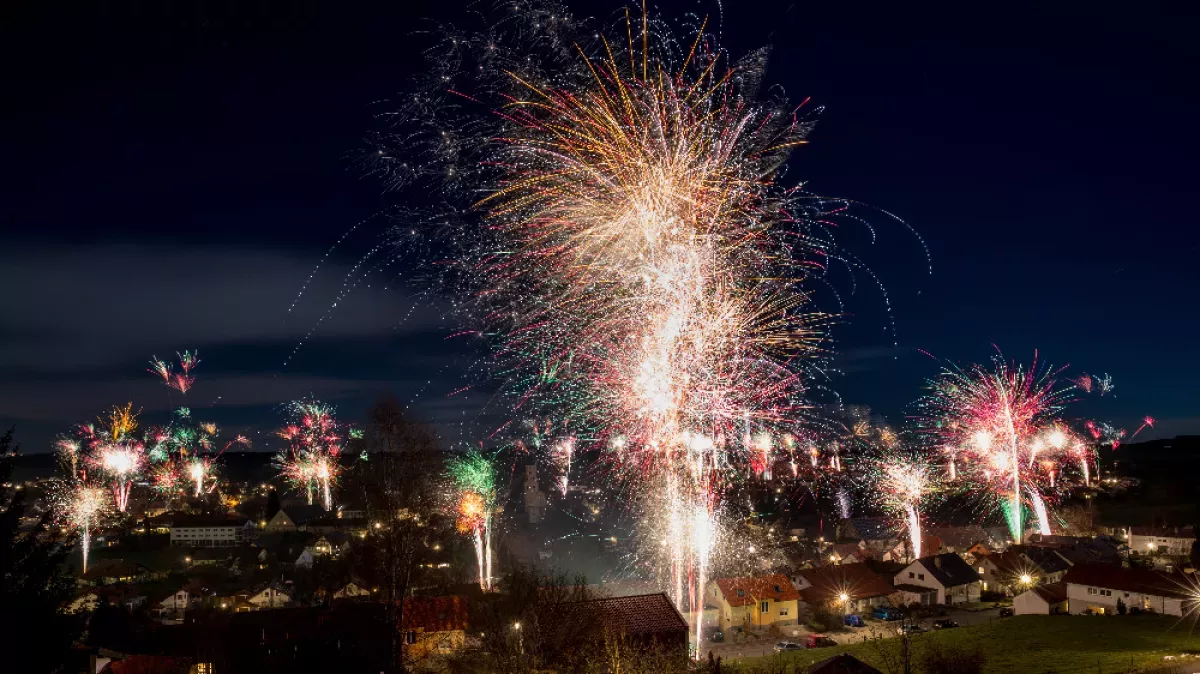New Year's Eve, observed on December 31st, marks the final day of the year in the Gregorian calendar. Celebrations worldwide often involve social gatherings with dancing, feasts, and the spectacle of fireworks displays. Many Christians participate in watchnight services. Festivities typically extend past midnight into New Year's Day, January 1st.
1907: Times Square ball drop held for the first time
In 1907, the Times Square ball drop event was held for the first time in New York City.
1909: Promotion of Twelve Grapes Tradition
In 1909, Alicante grape growers promoted the tradition of eating twelve grapes at midnight on New Year's Eve to spur sales of that year's surplus harvest.
April 1912: Kim Il-sung's date of birth
April 1912 is Kim Il-sung's date of birth, which is the basis of the North Korean calendar.
1918: New Year's Eve observed in Israel
New Year's Eve has been observed in Israel since the introduction of the Gregorian calendar in 1918, and it is referred to as Silvester.
1919: Adoption of the Gregorian Calendar in Yugoslavia
In 1919, Yugoslavia adopted the Gregorian calendar, leading to a tradition of celebrating the New Year twice due to the Serbian Orthodox Church following the Julian calendar.
1928: Abolishment of Christmas and Religious Holidays
In 1928, the Communist Party in the Soviet Union abolished Christmas and other religious holidays as part of policies meant to curtail the practice of religion.
1929: Guy Lombardo begins annual radio broadcast
In 1929, Guy Lombardo and his band, The Royal Canadians, began their annual New Year's Eve radio broadcast from New York City.
1935: Promotion of New Year as a Non-Working Holiday
In 1935, Soviet officials, including politician Pavel Postyshev, began promoting the New Year as a non-working holiday for youth.
1945: League of Communists discourages religious holidays
In 1945, After World War II, the League of Communists of Yugoslavia came into power, and the communist government discouraged the observance of religious holidays and encouraged celebrations of the New Year.
1951: First broadcast of Kōhaku Uta Gassen
Since 1951, NHK has traditionally broadcast the Kōhaku Uta Gassen ("Red and White Song Battle") on New Year's Eve.
1953: Exposure of Hogmanay via BBC
From 1953, Hogmanay received exposure across the entire United Kingdom via the BBC, who televised BBC Scotland-produced specials as part of their New Year's Eve programming.
1956: Guy Lombardo moves to CBS television
In 1956, Guy Lombardo moved his annual New Year's Eve broadcast to CBS television.
1956: Carnival Night Release
In 1956, the Soviet comedy film "Carnival Night" was released and has since become a New Year's Eve tradition on Russian television.
1956: Anniversary of Romanian Television
New Year's Eve in 1956 marked the opening of Romanian Television, which is celebrated with a national all-night telecast.
1958: Founding of Nos Galan Road Race
In 1958, the Nos Galan Road Race was founded by local runner Bernard Baldwin to commemorate Guto Nythbran
1959: First Japan Record Awards held on New Year's Eve
From 1959, the Japan Record Awards were held on New Year's Eve.
1963: Original Recording of Dinner for One
In 1963, "Dinner for One" was originally recorded and later used as filler programming by NDR due to its popularity, before becoming a New Year's Eve tradition.
1968: Bye Bye airs for the first time
In 1968, the CBC's French network Ici Radio-Canada Télé aired its first Bye Bye special, a comedy show presented by various comedians and troupes.
1968: First broadcast of The Party
The 1968 film The Party is aired after midnight on 1 January.
1972: Dinner for One's Traditional New Year's Eve Scheduling
In 1972, the British comedy sketch "Dinner for One" received its traditional New Year's Eve scheduling on German television, becoming a cultural phenomenon.
1973: Dick Clark's New Year's Rockin' Eve premieres on NBC
In 1973, Dick Clark's New Year's Rockin' Eve premiered on NBC.
1975: Dick Clark's New Year's Rockin' Eve moves to ABC
In 1975, Dick Clark's New Year's Rockin' Eve moved to ABC.
1976: Guy Lombardo's final CBS broadcast
In 1976, Guy Lombardo performed his final New Year's Eve broadcast on CBS.
1976: The Irony of Fate Release
In 1976, the Soviet comedy film "The Irony of Fate" was released and is often broadcast on Russian television channels on New Year's Eve.
1980: Start of Dinner for One tradition
Since 1980, the German comedy sketch Dinner for One is broadcast every year at 23:45, and ends just minutes before the new year.
1984: Inaugural New Year's Eve Concert for Peace
In 1984, the Cathedral of St. John the Divine in Manhattan hosted the first annual "New Year's Eve Concert for Peace", founded by Leonard Bernstein.
1985: End of Hogmanay Specials on BBC
After 1985, the poor reception to that year's Live into '85 led to the BBC abandoning the concept of Hogmanay specials altogether.
1985: Dinner for One not broadcasted
In 1985, the German comedy sketch Dinner for One was not broadcasted for New Year's Eve.
1989: International Solidarity Day of Azerbaijanis
In 1989, December 31 was marked as International Solidarity Day of Azerbaijanis, marking when local residents took down the Soviet–Iranian border to reunite with Iranian Azerbaijanis, and the Istanbul-held first World Congress of Azerbaijanis.
1989: "Skattmann" Sketch
In 1989, the Icelandic New Year's comedy special "Áramótaskaupið" featured a sketch portraying the Minister of Finance as a Batman-esque superhero known as "Skattmann".
1989: Gatherings in University Square after Romanian Revolution
Since the Romanian Revolution of 1989, Romanians have gathered in the University Square in Bucharest on New Year's Eve.
1992: First Airing of Year of the Farce
In 1992, CBC Television aired the first "Year of the Farce", an annual special produced by the radio comedy troupe Royal Canadian Air Farce.
1993: Royal Canadian Air Farce Television Series
In 1993, The CBC's Royal Canadian Air Farce became a weekly television series.
1993: First New Year's Eve festivities at Times Square shopping centre
In 1993, the Times Square shopping centre in Causeway Bay hosted the first New Year's Eve festivities featuring the "lowering" of an apple.
1994: Release of Tsai Ming-liang's film Vive l'amour
In 1994, Tsai Ming-liang's film Vive l'amour was released. The closing scene became the basis of a flash mob gathering.
1996: First Johnny's Countdown concert event
From 1996, the talent agency Johnny & Associates organised Johnny's Countdown - a concert event at the Tokyo Dome televised by Fuji Television.
1997: Revival of Little Blue Light
In 1997, the Soviet variety show "Little Blue Light" was revived by Russia-1 as a New Year's special.
1998: Bye Bye original run ends
In 1998, the original run of the Bye Bye special ended after running since 1968.
1998: Networked Edinburgh-Based Hogmanay Special
In 1998–99, BBC One networked an Edinburgh-based Hogmanay special that would turn out to be equally shambolic, marking an exception to the London-centric specials.
1999: Yeltsin's Resignation Announcement
In 1999, Boris Yeltsin famously announced his resignation as president of Russia during his New Year's address.
1999: Inaugural Top 2000 Broadcast
In 1999, NPO Radio 2 in the Netherlands began broadcasting an annual countdown of the top 2000 songs of all-time, starting a new tradition to mark the new millennium.
2000: ABC 2000 Today airs
In 2000, ABC aired ABC 2000 Today, a one-off New Year's Eve special.
2000: Second Top 2000 Broadcast
In 2000, NPO Radio 2 broadcasted the second ever annual countdown of the top 2000 songs of all-time.
2000: Sale of fireworks to individuals illegal
Since 2000, the sale of fireworks to individuals has been illegal in Chile.
2001: First MMA event at Saitama Super Arena
Since 2001, the Saitama Super Arena has hosted an MMA event on New Year's Eve, which were initially promoted by Pride Fighting Championships.
2005: Regis Philbin guest hosts New Year's Rockin' Eve
In 2005, Regis Philbin guest hosted Dick Clark's New Year's Rockin' Eve.
2006: Ryan Seacrest succeeds Dick Clark as host
In 2006, Ryan Seacrest succeeded Dick Clark as the host of New Year's Rockin' Eve.
2006: Bye Bye revived after hiatus
In 2006, the Bye Bye special was revived by Rock et Belles Oreilles to mark its 25th anniversary.
2006: Last Japan Record Awards held on New Year's Eve
Until 2006, the Japan Record Awards were held on New Year's Eve.
2007: Yarennoka! MMA event
In 2007, Yarennoka! was organized by former Pride executives on New Year's Eve.
2008: "Helvítis fokking fokk!" Sketch
In 2008, the Icelandic New Year's comedy special "Áramótaskaupið" popularized the catchphrase "Helvítis fokking fokk!" as a reaction to the Icelandic financial crisis.
2008: Year of the Farce Series Finale
In 2008, the Royal Canadian Air Farce produced the last ever episode of their weekly television series.
2009: First New Year's Street Party in Floriana
In 2009, Malta organized its first New Year's street party in Floriana, which proved controversial due to street closures.
2009: Bye Bye placed on hiatus
In 2009, the Bye Bye special was placed on hiatus after the previous year's edition was criticized by viewers.
2009: Ball displayed atop One Times Square
In 2009, the New Year's Eve ball was placed on permanent display atop One Times Square in New York City.
2010: First National Celebrations in St. George's Square, Valletta
In 2010, Malta held its first national New Year's Eve celebrations in St. George's Square, Valletta.
2010: London Eye Fireworks Display with Musical Soundtrack
On New Year's Eve in 2010, an estimated 250,000 spectators gathered to view an eight-minute fireworks display around the London Eye, set to a musical soundtrack for the first time.
2011: Samoa first to receive the New Year
From 2011, Samoa was the first country to receive the New Year, using UTC+14:00 as its time zone during the Southern Hemisphere summer.
2011: Willkommen Live Broadcast
In 2011, the New Year's Eve celebrations at the Brandenburg Gate in Berlin featured a live broadcast on ZDF called "Willkommen" with musical guests, adding to the festivities.
2011: Light and sound show at The Bund in Shanghai
Since 2011, a light and sound show has been held at The Bund in Shanghai, a few minutes before midnight to celebrate the Gregorian New Year.
2012: Record Number of Runners in San Silvestre Vallecana
In 2012, the San Silvestre Vallecana, a 10 km race in Madrid, hosted a record of around 40,000 runners on New Year's Eve.
2012: First Lagos Countdown festival
In 2012, the first Lagos Countdown festival, later renamed One Lagos Fiesta, was held in Lagos as part of an effort to establish tourism-oriented New Year's festivities.
2013: World Record Attempt at Largest Simultaneous Singing of National Anthem
For 2013-14, the New Year's Eve celebration at Maidan Nezalezhnosti in Kyiv included a world record attempt at the largest simultaneous singing of a national anthem, amid the Euromaidan movement.
2013: Serbian New Year Designated as a Public Holiday Again
In 2013, Serbian New Year was designated as a public holiday again, with major cities having modest festivities.
2013: Jawbone report on Israelis awake at midnight
In December 2013, wearables manufacturer Jawbone published a report estimating that only 67.4% of Israelis were awake at midnight on New Year's Eve.
2013: Start of Pyongyang New Year's Eve fireworks displays
The celebrations of New Year's Eve in Pyongyang are more recent in origin, with the fireworks displays dating from 2013.
December 2014: Jawbone report on Israelis awake at midnight
In December 2014, wearables manufacturer Jawbone published a report estimating that only 67.4% of Israelis were awake at midnight on New Year's Eve in 2013.
2014: Last New Year's Eve festivities at Times Square shopping centre
2014 was the last year the Times Square shopping centre in Causeway Bay hosted New Year's Eve festivities featuring the "lowering" of an apple.
2014: Los Angeles holds inaugural New Year celebration
In 2014, Los Angeles held its inaugural public New Year celebration in Downtown's Grand Park, drawing over 25,000 spectators.
2014: Demonization of Novy God Traditions
In 2014, amid the Russo-Ukrainian War and the annexation of Crimea, traditions associated with Novy God have been demonized by Ukrainians.
2014: Sound and light show on the Arc de Triomphe
Since 2014, a sound and light show using video mapping techniques has been held on the Arc de Triomphe, ending with a fireworks display at midnight.
2015: Countdown event discontinued at Times Square shopping centre
In 2015, the countdown event was discontinued at the Times Square shopping centre in favor of other events over the holiday season.
2015: Removal of "The Irony of Fate" from STB
In 2015, the film "The Irony of Fate" was pulled by STB in Ukraine as part of the Boycott Russian Films campaign, citing a lead actress who had been blacklisted by the Ukraine government for her support of the annexation.
2015: First Rizin Fighting Federation event
Rizin Fighting Federation took over the tradition beginning in 2015 with its inaugural MMA event on New Year's Eve.
2016: Chicago introduces Chi-Town Rising
In 2016, Chicago introduced a New Year's Eve event known as Chi-Town Rising.
2016: Reforms of Mohammed bin Salman curtail power of CPVPV
In 2016, the reforms of Mohammed bin Salman curtailed the power of the CPVPV.
2016: Saudi Arabia used the Umm al-Qura calendar
Until 2016, Saudi Arabia used the Umm al-Qura calendar for administrative purposes.
2017: Multimedia light and sound show on Burj Khalifa
For 2017-18, a fireworks show was not held at the Burj Khalifa. Instead, a multimedia light and sound show was presented using the tower's lighting system.
2017: CBC Television broadcasts countdown special
In 2017, CBC Television broadcast a localized countdown special for each time zone, featuring music performances and coverage of midnight festivities.
2017: Fireworks display estimated to attract over three million spectators
In 2017, it was estimated that the fireworks display on Copacabana Beach in Rio de Janeiro would attract over three million spectators.
2017: Pitbull's New Year's Revolution last aired
In 2017-18, Pitbull's New Year's Revolution, a televised special on Fox from Miami's Bayfront Park, was last aired.
2018: Kim Il Sung Square New Year's Eve concert
For 2018-19, Kim Il Sung Square hosted a concert performance by the state Moranbong Band, midnight fireworks, and a drone show.
2018: Áramótaskaupið Viewership
In 2018, Iceland's "Áramótaskaupið" was watched by an estimated 75% of the population, across 98% of all televisions in the country, making it the most-watched television program of the year.
2018: New Year celebrations in Rio de Janeiro
In 2018, New Year celebrations in Rio de Janeiro included fireworks on Copacabana Beach, attracting millions of spectators.
2018: Enhancement of Taipei 101 fireworks show
In 2018, the New Year's Eve fireworks show from the Taipei 101 skyscraper in Taipei was enhanced by the installation of a new LED lighting system.
2019: Final Year of the Farce Special
In 2019, Royal Canadian Air Farce produced the last "Year of the Farce" as an annual reunion special.
2019: Inaugural Riyadh Season festival
In 2019, the capital of Riyadh introduced a new winter entertainment festival known as Riyadh Season, including New Year's festivities centred upon Boulevard Riyadh City.
2019: Return of fireworks show at Burj Khalifa
The New Year's Eve fireworks show returned for 2019 at the Burj Khalifa, in tandem with a multimedia presentation.
January 2020: Private Firecrackers and Rockets Prohibited
On January 2020, the Dutch government announced a ban on private firecrackers and rockets due to numerous fireworks incidents during New Year's Eve.
2020: End of Shibuya Crossing gathering
In 2020, Shibuya Crossing in Tokyo ended its New Year's Eve gathering of revelers due to the COVID-19 pandemic, overtourism, and public intoxication.
2020: Survey on familiarity with Novy God in Israel
In a 2020 survey, 72% of Israelis surveyed stated they were familiar with the holiday, while 54% did not perceive Novy God to be part of the country's culture.
2021: Record low audience for Kōhaku Uta Gassen
In 2021, Kōhaku Uta Gassen reached a record low of 34.3% in the Video Research ratings.
2021: New Year's Eve a special working holiday in the Philippines
In 2021, New Year's Eve was a special working holiday in the Philippines.
2021: Addition of Drone Show to Fireworks
In 2021, a drone show was added to the fireworks display on New Year's Eve in Central London for the first time.
2021: Sound and light show cancelled on the Arc de Triomphe
In 2021, sound and light show cancelled on the Arc de Triomphe due to the COVID-19 pandemic
2021: Bye Bye breaks viewing record
In 2021, the Bye Bye special was seen by a record 4.862 million viewers.
2021: Nashville's Big Bash televised by CBS
Since 2021, Nashville's New Year's Eve festivities have been televised by CBS as part of its special New Year's Eve Live: Nashville's Big Bash.
2021: Samoa last to receive the New Year
Until 2021, Samoa was the first country to receive the New Year, using UTC+14:00 as its time zone during the Southern Hemisphere summer.
2022: New Year's Eve a special working holiday in the Philippines
In 2022, New Year's Eve was a special working holiday in the Philippines.
2022: Sound and light show cancelled on the Arc de Triomphe
In 2022, sound and light show cancelled on the Arc de Triomphe due to the COVID-19 pandemic
2022: South Koreans age reckoning method used
Until 2022 South Koreans calculated their age using the East Asian age reckoning method, with all South Koreans adding a year to their age at midnight of the New Year.
2022: Last Johnny's Countdown concert event
Until 2022, the talent agency Johnny & Associates organised Johnny's Countdown - a concert event at the Tokyo Dome televised by Fuji Television.
2023: South Korea ends age reckoning method
In 2023 the South Korean government ended the practice of calculating their age using the East Asian age reckoning method.
2023: Flash mob gathering at Taipei's Daan Forest Park
In 2023, a new tradition emerged of a flash mob gathering at Taipei's Daan Forest Park at midnight to re-enact the closing scene of Tsai Ming-liang's 1994 film Vive l'amour.
2023: Formation of Starto Entertainment
In 2023, in the wake of sexual abuse allegations surrounding the agency's founder, a new agency known as Starto Entertainment was formed to take on Johnny & Associates' roster.
2023: CBC Countdown Special Placed on Hiatus
In 2023, the CBC countdown special was placed on hiatus due to financial issues, with a Mae Martin comedy special airing in its place.
2023: Aggression Towards Emergency Services in Berlin
On New Year's Eve in 2023, Berlin experienced 38 separate fire department incidents, including attacks on emergency service staff with fireworks and beer crates, resulting in 15 injuries among emergency responders and 18 among police officers.
December 2024: Taiwan Film and Audiovisual Institute gathering at Daan Forest Park
On December 2024, the Taiwan Film and Audiovisual Institute organized a formal version of the flash mob gathering to re-enact the closing scene of Tsai Ming-liang's 1994 film Vive l'amour at Daan Forest Park.
2024: "New Year's Eve Pregame" special by This Hour Has 22 Minutes
In 2024, CBC's news satire series This Hour Has 22 Minutes took on a similar role to Year of the Farce with an hour-long "New Year's Eve Pregame" special.
2024: CBC Countdown Special Revived
In 2024, the CBC countdown special was revived across CBC and CBC News Network.
2025: Mediacorp New Year's concert at Singapore Sports Hub
In 2025, state broadcaster Mediacorp will organise and televise a New Year's concert event, which will be held at Singapore Sports Hub.
2030: Saudi Vision
In 2019, Riyadh Season festival was introduced to support Saudi Vision 2030.
Mentioned in this timeline
Ukraine is a large country in Eastern Europe second in...
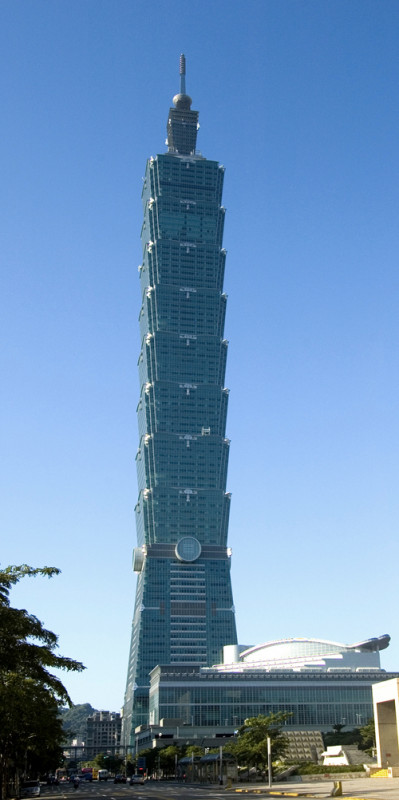
Taipei formerly Taipei World Financial Center was the world's tallest...
CBS Broadcasting Inc CBS is a prominent American commercial broadcast...
Saudi Arabia officially the Kingdom of Saudi Arabia KSA is...
The Union of Soviet Socialist Republics USSR existed from to...
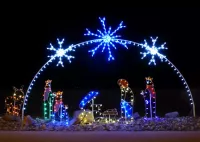
Christmas is an annual festival celebrated on December th commemorating...
Trending
Kiana James whose real name is Kayla Klingensmith is an American professional wrestler currently signed to WWE and performing on...

Lauri Elias Markkanen nicknamed the Finnisher is a Finnish professional basketball player currently playing for the Utah Jazz in the...

1 month ago Paul George's Season Debut Possible as Injury Report Upgrades Him to Questionable

8 months ago Nebraska family of four dies in apparent murder-suicide on graduation day.
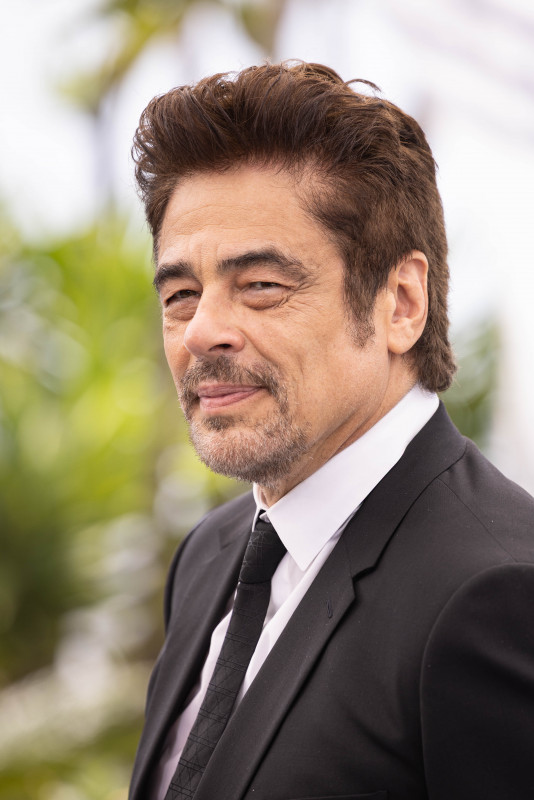
1 month ago Benicio Del Toro and Kristen Stewart Honored at SFFILM 2025 Awards Night

2 months ago Deni Avdija wins in Utah, builds something special in Portland, breaks out for Blazers.
Popular
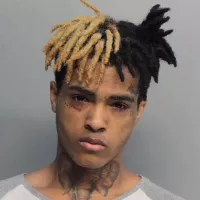
XXXTentacion born Jahseh Dwayne Ricardo Onfroy was a controversial yet...

Ben Shapiro is a prominent American conservative political commentator media...

Candace Owens is an American conservative political commentator and author...
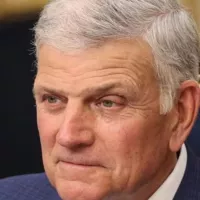
William Franklin Graham III commonly known as Franklin Graham is...
The Kennedy Center Honors are annual awards recognizing individuals and...

Stranger Things created by the Duffer Brothers is a popular...
